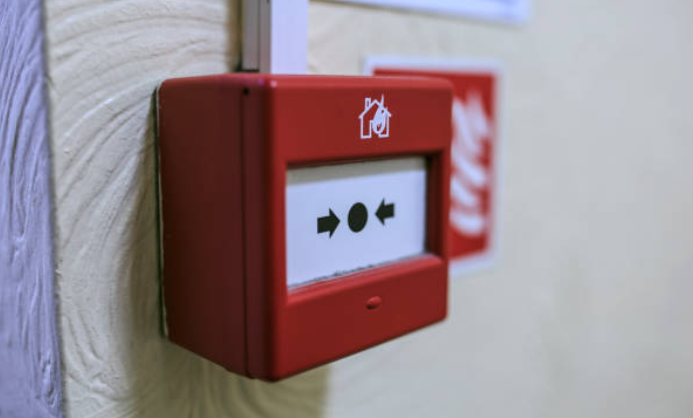Why Complete a Healthcare Fire Compartment Drill?
Emergency evacuation is not as straightforward for nursing homes or disability services. It is not as easy as just heading for the nearest fire exit. In addition, residents/service users are often less mobile; they may use walking sticks or wheelchairs or be unable to walk without assistance; as a result, it can be a struggle for many to move around quickly. The Healthcare Fire Compartment Drill allows you to assess your level of readiness.
An evacuation plan should be accurately defined based on the centre’s fire risk assessment findings. Practising Healthcare Fire Compartment Drills is an essential component of any fire safety programme, and it is a legal obligation for all nursing homes and disability services. In addition, an evacuation plan should be established based on the centre’s fire risk assessment results, which should include escape routes, final fire exits, and internal and external assembly points. The most efficient approach to guarantee that this method of escape is successful is to conduct frequent fire drills and complete compartment evacuation exercises to test and finetune the procedure.
When completing a Healthcare Fire Compartment Drill, we provide rescue dummies (to ensure staff safety, so staff are not requested to lie in beds to simulate an immobile resident), smoke simulators, and portable fire extinguishers to create a realistic experience that can truly reflect the ability of the centre to evacuate residents/service users safely and promptly are all utilised to make the exercise as lifelike as possible to a real fire. Only participants in the Healthcare Fire Compartment Drill who actively are engaged in evacuating residents/service users are recorded on the drill report.
Please Note: Staff role players in the drill are not noted as drill participants. Where the centre can assist in the movement of training dummies, one assessor is required; where this is not possible, we must provide two assessors.
Department of the Environments guidelines below
The 1996 “Guide to Fire Safety in Existing Nursing Homes and Similar Type Premises:- 3.4.3 Fire and Evacuation Drills – Practice fire drills should be carried out at least twice a year. It should be assumed, in as far as is practicable, that a fire situation has occurred and the actions expected to be performed should be rehearsed. These would include raising the alarm, checking of escape routes and simulated evacuation (using staff as “residents”), use of fire extinguishers, etc”.
“27.1 The registered proprietor and the person in charge of the nursing home shall:- (b) make adequate arrangements to secure by means of fire drills and practices that the staff, and so far as is practicable, dependent persons in the nursing home, know the procedure to be followed in the case of fire”.
Nursing homes will need to make special accommodations for Healthcare Fire Compartment Drills, particularly those with many occupants with mobility issues. With this in mind, any fire risk assessment carried out will have to detail steps taken to protect those at unique risks, such as mobility-impaired residents or residents living with dementia. This includes setting specific guidelines for fire drills, considering several factors. Centre location, building design, compartmentation internal and external assembly points process for raising the fire alarm (is the fire detection and alarm system configured correctly to facilitate progressive evacuation rather than single staged evacuation?), staff training, staffing levels, evacuation aids, and post-care locations.
- Centre location
- Building design
- Compartmentation
- Internal and external assembly points
- Process for raising the fire alarm (is the fire detection and alarm system configured correctly to facilitate progressive evacuation rather than single staged evacuation?)
- Staff training
- Staffing levels
- Evacuation aids
- Post-care locations.
Residents don’t need to perform a complete evacuation of the premises during a drill. Those who may be exempt include those who cannot be moved for health reasons; those required to remain with residents; those charged with operating equipment or processes that cannot be stopped, even temporarily. A risk assessment performed before the drill should determine which residents or occupants fall into these categories. Should a resident wish to partake in the fire drill, management should assess the potential risk of the resident’s involvement; where this risk is low, their resident’s involvement should be encouraged. Depending on the passive fire resistance in place within the centre, it may be possible for vulnerable residents to be moved to nearby areas of the centre that will remain unaffected by fire for a minimum of 30 minutes, allowing fire and rescue services to extinguish the fire. Again, if the correct facilities are in place, this can be implemented into the fire drill procedure and the full compartment evacuation exercise.
Your Evacuation Strategy and the Healthcare Fire Compartment Drill
The evacuation strategy in a nursing home is progressive evacuation; compartments and sub-compartments should have sufficient space to accommodate the additional persons evacuated into these areas temporarily. One of two recognised evacuation strategies may be appropriate for the centre, either Immediate or Progressive Evacuation. The strategy adopted will depend principally on the dependency of residents, the number of staff available to assist with evacuation and the layout and construction of the premises.
Immediate evacuation describes a situation where, upon discovering a fire and a warning is given, the emergency fire action plan involves immediate evacuation of the whole building.
Progressive evacuation is an evacuation in a controlled sequence, with those within the centre who are at most significant risk being evacuated directly to another part of the centre through a fire door(s) into another sub-compartment within the centre where, for a time, they would be relatively safe from the effects of fire in its initial stages. This movement would generally be to a separate sub-compartment or compartment on the same floor if the premises layout and the location of the fire allowed this option.
- Phase 1: Evacuation from the room/area of origin of the fire.
- Phase 2: Evacuation to a place of relative safety.
- Phase 3: Evacuation of parts of the centre.
- Phase 4: Total evacuation of the centre.
Phases 1 and 2 involve horizontal movement away from the immediate danger of the fire and limited vertical movement. Phases 3 and 4 involve horizontal and vertical movement in the case of upper storeys. Vertical movement will be by way of protected stairways from upper floors to a place of safety inside or outside the centre.
What is a Fire Compartment?
A fire compartment is part of a nursing home constructed to provide a physical fire-resisting barrier to prevent the spread of fire and smoke to or from another part of the centre. A compartment can be further subdivided into sub-compartments to aid progressive evacuation. For example, where residents are dependent on staff assistance in the event of a fire, and the evacuation strategy is progressive evacuation, the building should be divided into different fire-resisting compartments or sub-compartments by fire-resisting doors, walls and floors. Although a residence bedroom in itself is not a sub-compartment, it is a protected area within a sub-compartment; an evacuation residence bedroom can be seen as a place of temporary safety while the sub-compartment is being evacuated.
This restricts the number of residents at immediate risk when a fire occurs and allows their evacuation as a first stage to an adjoining compartment or sub-compartment. Fire-resistance of compartment walls, floors and doors for at least 60 minutes, or in premises with only medium and/or low dependency residents were no residents are sleeping above the ground floor, at least 30 minutes and Fire-resistance of sub-compartment walls and doors for at least 30 minutes.
Duration of a Healthcare Fire Compartment Drill
The time required to complete Healthcare Fire Compartment Drills depends on the compartment’s size under pendency levels being replicated. The time to complete a drill can be broken down into the following activities, (1) preparation including staff briefing outlining resident conditions and scenario, (2) placement of training dummies in required locations, (3) completing fire drill exercise, (4) debriefing on the outcome of the fire drill exercise. This process generally takes 1 to 1.5 hours to complete this allows us to run 2 to 3 compartment Healthcare Fire Compartment Drills for 4 hours.










